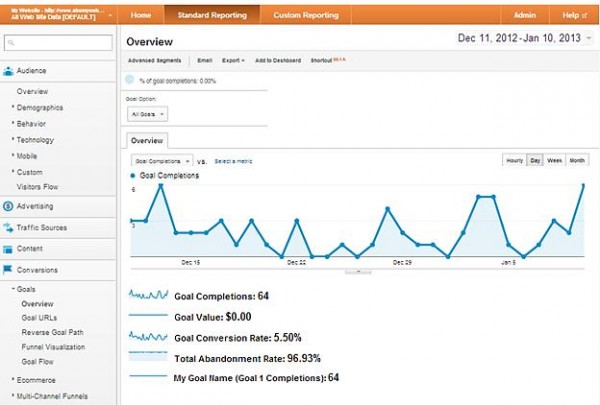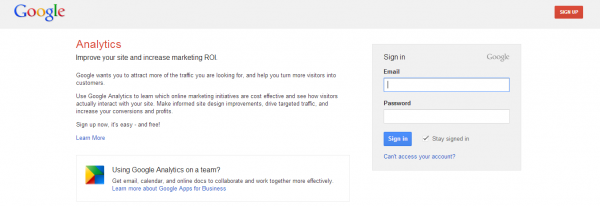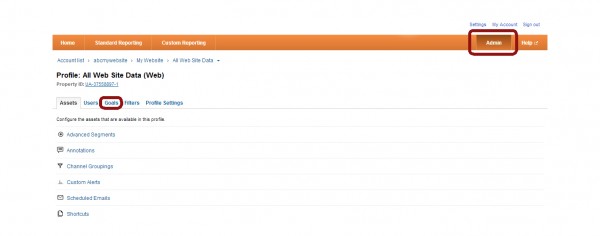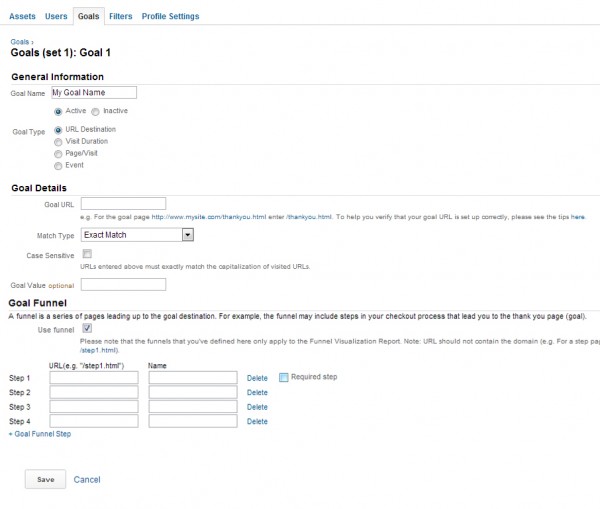Google Analytics Tutorial: Goal Tracking
Google Analytics Goals and Funnels Visualization are the perfect tools to identify how your goals are performing and how you can improve your website’s strategy.
Websites have goals. It could be an online store or a subscription site, whatever it may be, it’s important to have good goals in a website. But knowing the progress in your goals is totally different.
Webmaster’s Note: This is an entry by Khris Torres – you’ll be seeing more of him here and in SEO School as he partners with me in creating tutorials and guides for you guys.
The most common goal that a person can think of would be selling something online. This is known as an e-commerce goal. By the way, Google Analytics has an Ecommerce module, which I plan to make another article for someday. But for now, we will discuss about other kinds of goals.
Other goals for example can be a Lead Generation goal. This is when you want a user to enter their contact information so that they can be contacted about their product inquiry. An Information goal is when you want a user to download your stuff or view your resource page. A Mailing List goal is when you want a user to join a newsletter or an email feed. In other words, you can have any type of goals in your website that you can track in Google Analytics.
Start making goals
You would need the URL of your goal page, the name of the goal, the goal value and funnel. Make sure your website is integrated with Google Analytics. If you skip that step, you won’t be getting any data from your website. So if I were you, I’d learn Google Analytics Integration now.
Step 1: Login to Google Analytics
Step 2: Click on the Admin tab, which can be found in the upper right side of the page. Click on “Goals”, which is beside “Users” and “Filters”.
As you see, in the “Goals” tab that you can have only 4 goals that you can set. If you want to make more goals, just simply create a new profile.
Step 3: Click on a Goal that’s empty, assume its set 1.
Step 4: Fill up the form.
Write your goal name and select Active so that you can start tracking. For now, we will be teaching you URL Destination.
The goal URL is where you want your visitors to go to in your website. You don’t need to enter the complete address of the page. Instead of starting with www.absmywebsite.com/thankyou.html, you type in /thankyou.html and Google will automatically detect that page.
For a side track, I’ll be explaining the Different Match type options.
Exact match requires that your website goal URL is the exact same URL that you placed in the setup of Google Analytics. This means that there should be no dynamic session’s parameters or identifiers in your URL.
Head match can be used if your website goal page uses dynamically generated content. Head match captures data from the URL parent. Here’s a sample for you to understand better:
http://www.abcmywebsite.com/quote.cgi?page=1&id=1234
For this sample, you will not include the ID part of the URL. Any page that may have a different ID will still be tracked.
Regular Expression Match is a pattern used to match text. They can contain characters and metacharacters and they are used in Google Analytics to capture portions of data field. Within Google Analytics, regular expressions are most useful in filters and tracking goals. You can use it to exclude a range of IP addresses so that they will be tracked by Google Analytics. You can learn more about metacharacters in the help module of Google Analytics.
You can select the Case sensitive option if your website’s URL are case sensitive.
Goal values can be used to monitor sales or expenses. Just place a value of the goal URL. An example can be an email campaign if you’re studying about Email marketing. The goal URL would be the Thank you page whenever someone signs up for an email list. The value of the subscription is $5. By putting 5 on the Goal value, you can identify how much people are subscribing to your email list.
Goal Funnel is an optional feature of Google Analytics, but it can help you identify and visualized your goals in a form of a funnel. 
When you select to use goal funnel, an extended part of the form will appear. This is where you can track where your visitors are coming from and where they are going. This depends on your goal type and the structure of your website. It’s best to identify where your visitors are coming from and where should they go to get to your goal URL.
As soon as you save the goal, you are done! Let’s wait and see how your goals progress.




